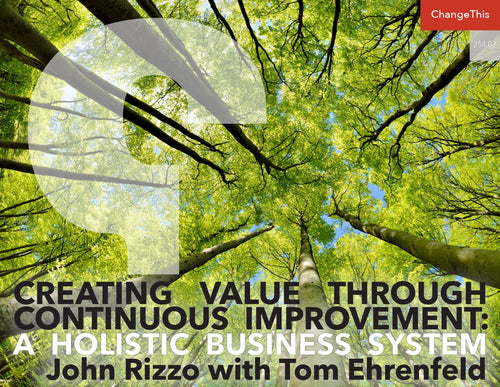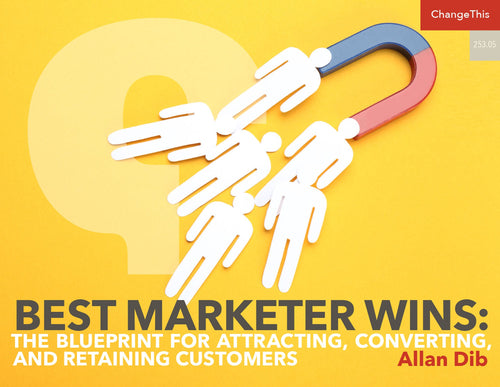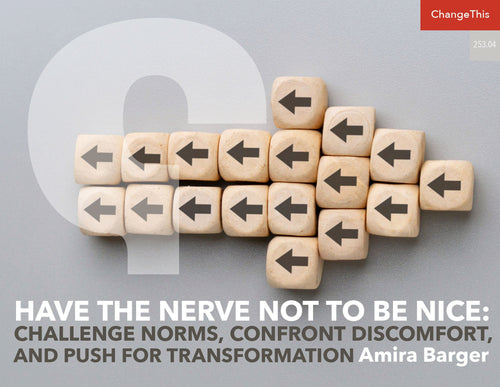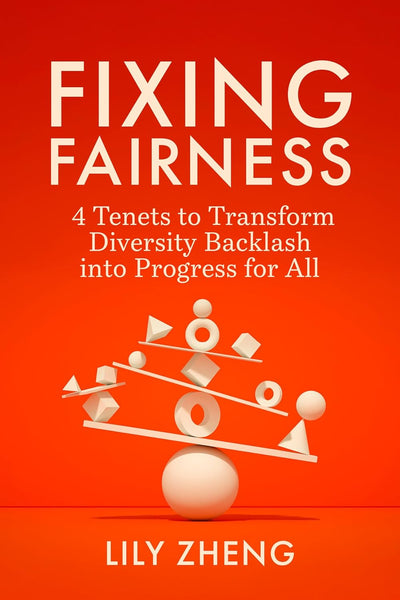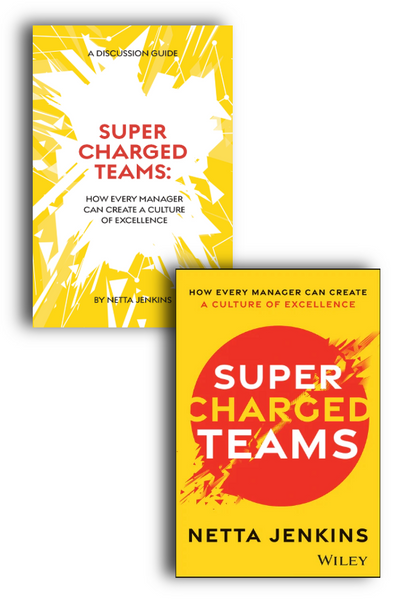The Future of Work Starts at the Front Line
Rick Tucci believes that, as technology reshapes our organizations, "leaders are being handed an unprecedented opportunity: the chance to redeploy time and talent on the front lines." For a real-world example of this, Tucci turns to his experience working with Steve Preston and the U.S. Small Business Administration in the aftermath of Hurricane Katrina.
The future of work is employee-powered.
The most valuable resource in any organization is not technology or capital, but the collective genius of its employees. As AI and automation reshape our organizations, leaders are being handed an unprecedented opportunity: the chance to redeploy time and talent on the front lines.
The question is, will they use it wisely?
Too many are choosing the path of expedience—downsizing teams, eliminating roles, and letting years of institutional knowledge walk out the door. We’ve seen it in recent federal workforce reductions and across tech companies chasing efficiency.
But there’s a better choice: redeploy that freed-up capacity into observation, insight generation, and rapid-cycle innovation. The real value of frontline employees isn’t just in what they do—it’s in what they know and see. When given the right tools and support, they can become your most powerful drivers of change.
In the aftermath of Hurricane Katrina, the U.S. Small Business Administration was buried under 160,000 stalled loan applications and intense public scrutiny. Rather than hire consultants or issue top-down mandates, newly appointed SBA Administrator Steve Preston made a bold move: he empowered the people closest to the problem.
What followed—assisted by the Ideas-to-Action Process™—was a transformation that turned the agency around in record time. And the key wasn’t technology. It was trust, process, and unleashing the people who knew the work best.
Steve Preston: Crisis Mode at the SBA
STEVE PRESTON’S PERSPECTIVE: The year 2005 will forever be linked to the devastation of Hurricane Katrina. In its wake, I took the helm of the Small Business Administration (SBA)—the federal agency responsible for providing disaster recovery loans to both businesses and homeowners. The unprecedented demand for federal loans had overwhelmed the agency’s operations. A year after the storm, aid had barely trickled out, leaving individuals and communities stranded in their efforts to rebuild.
The SBA faced significant challenges on many fronts. Over 160,000 loan applications had piled up, employee morale was the lowest among thirty-one large federal agencies, and public trust had eroded. We were also drowning in negative press, facing harsh criticism from political leaders and the media. Congressional leaders had demanded my predecessor’s resignation, and the media was relentless.
Simply put, disaster victims continued to suffer, communities remained devastated, and faith in our government dwindled. To turn the tide, we needed a complete organizational transformation. I drew on my prior business experience and focused on three key building blocks.
UNDERSTANDING THE DEPTHS OF THE PROBLEM
First, we needed to fully grasp the magnitude and complexity of the challenges facing the SBA. We collected and analyzed loan-processing data, interviewed disaster victims and employees, and conducted town hall meetings to hear directly from those affected. The comprehensive assessment identified a complex web of outdated systems, siloed departments, and a lack of clear accountability.
This deep dive into the data and the voices of our stakeholders was key to identifying the root causes of the problems and developing targeted solutions. We discovered that the existing loan-processing system was fragmented and inefficient, with multiple handoffs and redundant steps.
This not only slowed down the disbursement of funds but also led to errors and inconsistencies in decision-making. Moreover, employees felt disempowered and disconnected from the agency’s mission, which further hampered productivity and morale.
I realized that to make a meaningful difference, we needed to address not only the technical issues but also the cultural and organizational barriers. We had to empower employees to speak up, share their ideas, and take ownership of solutions.
BUILDING A FOUNDATION OF TRUST AND COLLABORATION
Second, we needed to establish open communication and transparency. I met with employees at all levels, listening to their concerns and frustrations. I also shared the data we had collected, painting a stark picture of the challenges we faced but also emphasizing the potential for positive change.
By acknowledging the difficulties and inviting employees to be part of the solution, we began to foster a sense of shared responsibility and collective purpose. We held more town hall meetings where I answered questions directly from employees and provided updates on our progress. I also encouraged employees to share their ideas and concerns through an anonymous feedback system.
INSTALLING A DISCIPLINED PROCESS FOR INNOVATION AND EXECUTION
Third, we needed to tap into the power of an engaged team. I have long believed that ninety percent of the best insights and ideas are already in the minds of an organization’s employees. However, leaders must invite them to the table, ask the right questions, and listen hard. I have found this to be especially true when an organization is underperforming.
Employees hear what customers are experiencing, they know where technology works and where it’s failing, and they create the workarounds when a process isn’t working. As a result, they know what “better” looks like.
I have also learned that engaging employees isn’t about management having a two-way conversation and then acting on ideas. That’s for the suggestion box. The real magic happens when team members share their views with one another, challenge each other, and punch through the tough places to design solutions together.
To ignite the potential in employee ideas, leaders from the top to the front lines must sit at the table, roll up their sleeves, and commit the resources, expertise, and disciplined process needed to convert ideas into results.
We needed a process that would allow our employees who were in the line of fire to put their experience and creativity to work on solutions while continuing to respond to disaster victims. I didn’t want an army of consultants descending on our operation. I wanted our team to be the champions and implement the solution with the right kind of support.
To implement this vision of employee-driven change, we partnered with Rick Tucci and his team to deploy the Ideas-to-Action Process.
Rick Tucci: Answering the Call
RICK TUCCI’S PERSPECTIVE: I was on a family vacation in Maine when I took the call from Steve Preston. He explained the dire situation at the SBA and his desire to engage the workforce in finding a solution, and he needed to act fast. Based on my experience deploying the Ideas-to-Action Process across large organizations, I knew we could help. The next day, I was on a plane to the SBA’s Disaster Loan-Processing Center in Fort Worth, Texas.
This wasn’t my first exposure to a US federal government agency. I had previously been part of a multi-year transformation effort to assist the Department of Defense reform its purchasing practices across military services. That experience opened my eyes to the extraordinary dedication to mission of our military and civilian personnel and the challenges of working within a legislatively-governed bureaucracy.
After two days at the SBA’s sprawling loan-processing center in Fort Worth, interviewing employees and leaders at ground zero of the crisis, I was convinced that engaging employees through a structured process could make a difference. But the sheer scale of the challenge was sobering.
It entailed a multipronged, multilevel improvement in efficiency and processing speed within an operation that had been working seven days a week with two shifts for over a year. We needed to act quickly, but first, we needed a plan to sort and prioritize the needed changes.
We proposed a radical plan of action, at least for the agency: bring leaders from the loan-processing center and Washington headquarters together for a three-day transformation planning event. On a Wednesday morning ten days later, we kicked off what would later be named the “90-in-45” Campaign.
To the surprise of many gathered in our windowless hotel conference room, sitting at the table with several frontline supervisors was Steve Preston, ready to get started. From that point forward, I never doubted that we would succeed in our efforts.
Steve Preston: Reconnecting with Purpose
STEVE PRESTON’S PERSPECTIVE: When Rick and his team returned to my top team with their assessment from their initial visit to our loan-processing center, I wasn’t surprised by the findings. Employees were eager for change, but leaders were skeptical that anything could be done quickly.
I had to send the signal that responsiveness, simplification, and results were our new mantra. Most critically, we needed to reconnect our staff to the deep suffering that persisted with disaster victims and the important role everyone in the agency had to play to resolve the problem.
After we completed much of our initial work to understand the issues, we held a threeday all-hands meeting to bring the entire loan-processing team together and share our findings. Before the event, I sent a camera crew to the Gulf to capture people telling stories about their need for SBA loans. Some disaster victims had received their loans after great difficulty and told stories of how they were able to move forward as a result. Others had not received their loans and, in some cases, had given up.
When it came time to kick off our working session, I told the group that before we began, I wanted us all to hear from the people we were there to serve. Their voices were powerful, and they helped our team put the past behind them and set their sights on the bigger goal.
Although most change initiatives are unlikely to be as consequential to the lives of others as in that situation, this story illustrates a timeless leadership lesson. To tap into the remarkable power of teams, leaders need to call them into action, stand alongside them, and invite them onto the journey.
My experience is that people want to be part of something great. They want to give their best, and they want to be part of a team that is able to do more than any one person can do individually.
THE “90-IN-45” CAMPAIGN—A RALLYING CRY
The SBA faced multiple challenges—broken processes, communication breakdowns, faulty technology, inadequate customer service. The magnitude of the crisis demanded more than incremental improvements—we needed a breakthrough in how we served disaster victims. With committed leadership and employee engagement, the tide began to turn.
Guided by Rick’s team, we mapped the loan process and identified key areas for improvement. Our breakthrough? The “disaster-loan case manager” role, a single point of contact for each loan applicant. This simple idea, born from listening to frustrated borrowers, was unburdened by legacy tech or rigid policies.
Inspired by this and other solutions, we set a bold goal—to disburse 90,000 approved disaster loans in forty-five days. This “90-in-45” campaign galvanized the organization, creating a sense of urgency and shared purpose at all levels.
Teams redesigned workflows, customer engagement, and issue-resolution processes. They built dashboards for tracking progress and communication channels for swift course correction.
Every idea was scrutinized, and the most promising ones were implemented.
This not only improved efficiency but also boosted morale.
Employees felt heard, valued, and invested in the agency’s success. We provided training and resources, enabling them to take on new responsibilities and make decisions independently. We also recognized and rewarded those who went above and beyond.
Within weeks, loan production doubled, and funds started flowing. We exceeded our forty-five-day target, processing 90,000 loans and reducing the average wait time from seventy-four to sixteen days—a transformation that meant everything to disaster victims waiting to rebuild their lives and revitalize the Gulf Coast economy.
A TIMELESS LESSON FOR LEADERS
This story’s most remarkable aspect: the very people criticized for failures became the architects of this extraordinary success. They were given the opportunity to bring their best ideas forward, supported by expertise, a rigorous process, and the right tools.
This is how organizations build a culture of openness, collaboration, and excellence that sustains innovation and change. While less celebrated, the most gratifying result was our rise from the lowest to the highest ranked federal agency for employee morale.
The SBA’s transformation teaches a valuable lesson: the power of change rests in the hands of those who do the work. While this transformation occurred in a government agency during crisis, the principles of employee engagement and structured innovation apply equally to any organization seeking breakthrough results.
By fostering an environment where employees feel heard, valued, and equipped with the tools to own and implement solutions, leaders unleash their creativity, expertise, and passion.Adapted from Ideas to Action.
Adapted from Ideas to Action. Copyright © 2025 by Rick Tucci. All rights reserved.
About the Author
For 30+ years, Rick Tucci has helped organizations unlock the hidden genius of their workforce to drive innovation and achieve breakthrough results. His focus: empowering frontline teams to be active drivers of change—not just passive participants in top-down initiatives. As Founder of Leap Academy and author of Ideas to Action, Tucci offers a proven system for turning employee insight into measurable business impact. He works with organizations through consulting, workshops, and digital platforms to implement this transformation at scale.
Learn more at: www.ideastoactionplatform.com








